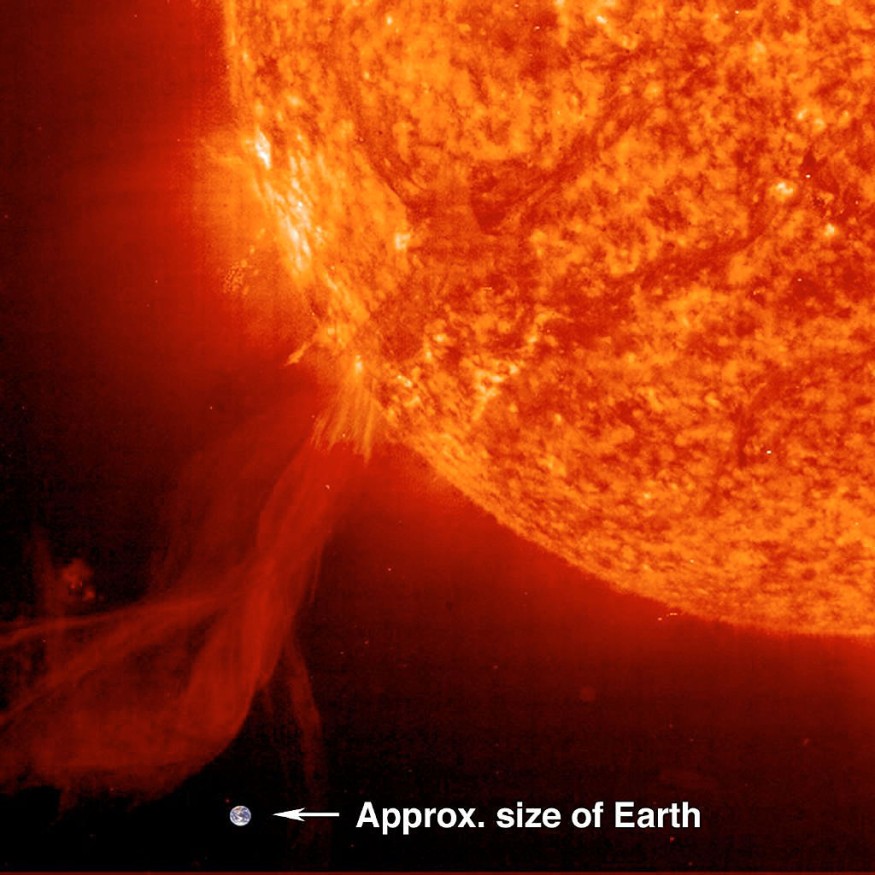Solar storms are a product of solar activities and the nature of our Sun, a gaseous ball of fire with strong magnetic fields which are in constant clash with one another.
These solar explosions can emit powerful highly-charged particles that can travel through space so fast and reach far, they can disrupt a planet, as in the case of Earth.
While these space weather phenomena have been recorded by astronomers for more than a century, there has been no occurrence of deadly solar storm events, possibly at least for now.
However, astronomers and space enthusiasts find it impossible to exclude the notion that a future solar storm catastrophe may transpire, as well as ask the question can Earth defend its from such event?
In recent years, scientists have conducted space-based research in an effort to protect our technology, including power stations and power grids, from a geomagnetic storm or radio blackouts, which are space weather hazards from solar storms.
Although Earth has its magnetic field and atmosphere that protects us from solar radiation, there are instances were the Sun penetrates our planet's natural defenses.
Solar Storm Threat

Prior to the discussion of a potential solar storm planetary defense, the scientific research process first identifies the factors or elements involved, particularly what are the solar storm threats that Earth is up against?
Similar to terrestrial natural disasters like hurricanes, tornadoes, earthquakes, there are also solar weather phenomenon that pose a threat to Earth.
For instance, the Space Weather Prediction Center (SWPC), under the National Oceanic and Atmospheric Administration (NOAA), classified environmental disturbances into three event types: geomagnetic storms, radio blackouts, and solar radiation storms.
The first two events can either disrupt, damage, or wipe out electronic equipment and infrastructure, as well as equipment and aircraft that rely on radio and satellite technology, according to the SWPC.
Potential Planetary Defense
However, these space weather events are not linear since their intensity and frequency would depend on the frequency and trajectory of solar storms like solar flare, solar wind, and coronal mass ejection (CME), which are large clouds of plasma and magnetic field, according to the National Aeronautics and Space Administration (NASA).
Given the solar storm threats, the conventional method of protection against these events are early warning systems and real-time monitoring, especially when the solar activity becomes violent or when sunspots become larger.
Back in 2017, NBC News reported that experts are not taking lightly the potential catastrophic impact of a geomagnetic and other of its solar storm events.
With this, space-based research are underway to study the sun's energy under the aim of protecting Earth's technological infrastructure, which was severely targeted by a previously powerful geomagnetic storm known as the 1859 Carrington Event.
Some measures reportedly being undertaken include the installation of temporary transformers that could act as a stopgap, protecting large power transformers, creation of solar energy-absorbing, building capacitor banks, and among others, the US broadcasting television network said.
© 2025 NatureWorldNews.com All rights reserved. Do not reproduce without permission.





